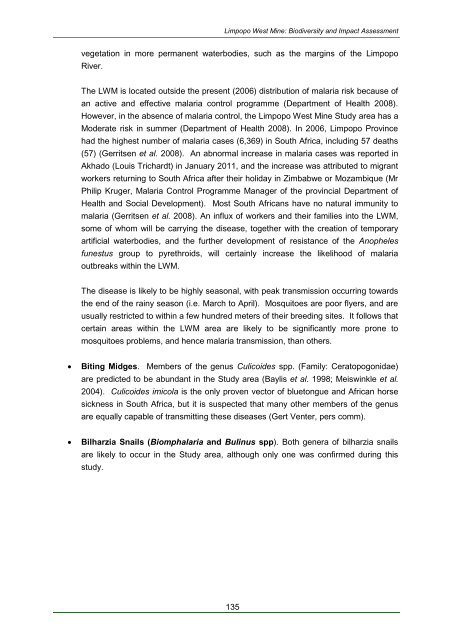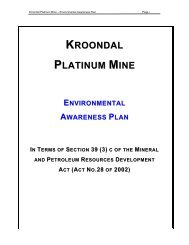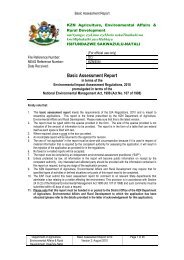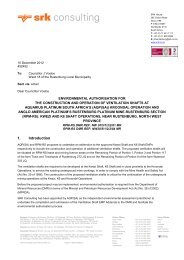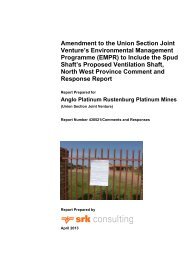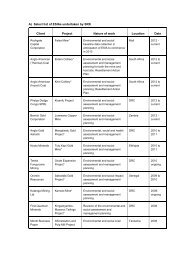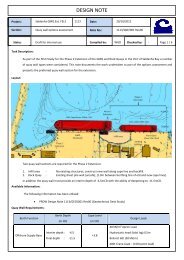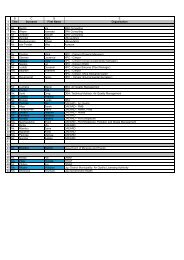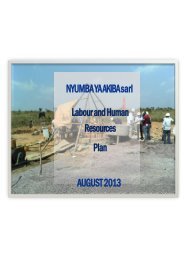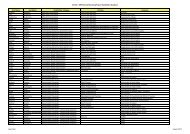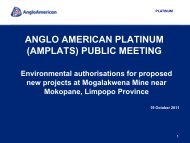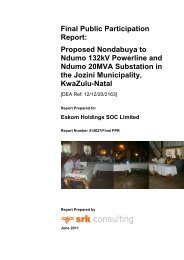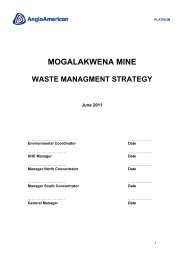Table of Contents - SRK Consulting
Table of Contents - SRK Consulting
Table of Contents - SRK Consulting
You also want an ePaper? Increase the reach of your titles
YUMPU automatically turns print PDFs into web optimized ePapers that Google loves.
Limpopo West Mine: Biodiversity and Impact Assessmentvegetation in more permanent waterbodies, such as the margins <strong>of</strong> the LimpopoRiver.The LWM is located outside the present (2006) distribution <strong>of</strong> malaria risk because <strong>of</strong>an active and effective malaria control programme (Department <strong>of</strong> Health 2008).However, in the absence <strong>of</strong> malaria control, the Limpopo West Mine Study area has aModerate risk in summer (Department <strong>of</strong> Health 2008). In 2006, Limpopo Provincehad the highest number <strong>of</strong> malaria cases (6,369) in South Africa, including 57 deaths(57) (Gerritsen et al. 2008). An abnormal increase in malaria cases was reported inAkhado (Louis Trichardt) in January 2011, and the increase was attributed to migrantworkers returning to South Africa after their holiday in Zimbabwe or Mozambique (MrPhilip Kruger, Malaria Control Programme Manager <strong>of</strong> the provincial Department <strong>of</strong>Health and Social Development). Most South Africans have no natural immunity tomalaria (Gerritsen et al. 2008). An influx <strong>of</strong> workers and their families into the LWM,some <strong>of</strong> whom will be carrying the disease, together with the creation <strong>of</strong> temporaryartificial waterbodies, and the further development <strong>of</strong> resistance <strong>of</strong> the Anophelesfunestus group to pyrethroids, will certainly increase the likelihood <strong>of</strong> malariaoutbreaks within the LWM.The disease is likely to be highly seasonal, with peak transmission occurring towardsthe end <strong>of</strong> the rainy season (i.e. March to April). Mosquitoes are poor flyers, and areusually restricted to within a few hundred meters <strong>of</strong> their breeding sites. It follows thatcertain areas within the LWM area are likely to be significantly more prone tomosquitoes problems, and hence malaria transmission, than others.Biting Midges. Members <strong>of</strong> the genus Culicoides spp. (Family: Ceratopogonidae)are predicted to be abundant in the Study area (Baylis et al. 1998; Meiswinkle et al.2004). Culicoides imicola is the only proven vector <strong>of</strong> bluetongue and African horsesickness in South Africa, but it is suspected that many other members <strong>of</strong> the genusare equally capable <strong>of</strong> transmitting these diseases (Gert Venter, pers comm).Bilharzia Snails (Biomphalaria and Bulinus spp). Both genera <strong>of</strong> bilharzia snailsare likely to occur in the Study area, although only one was confirmed during thisstudy.135


